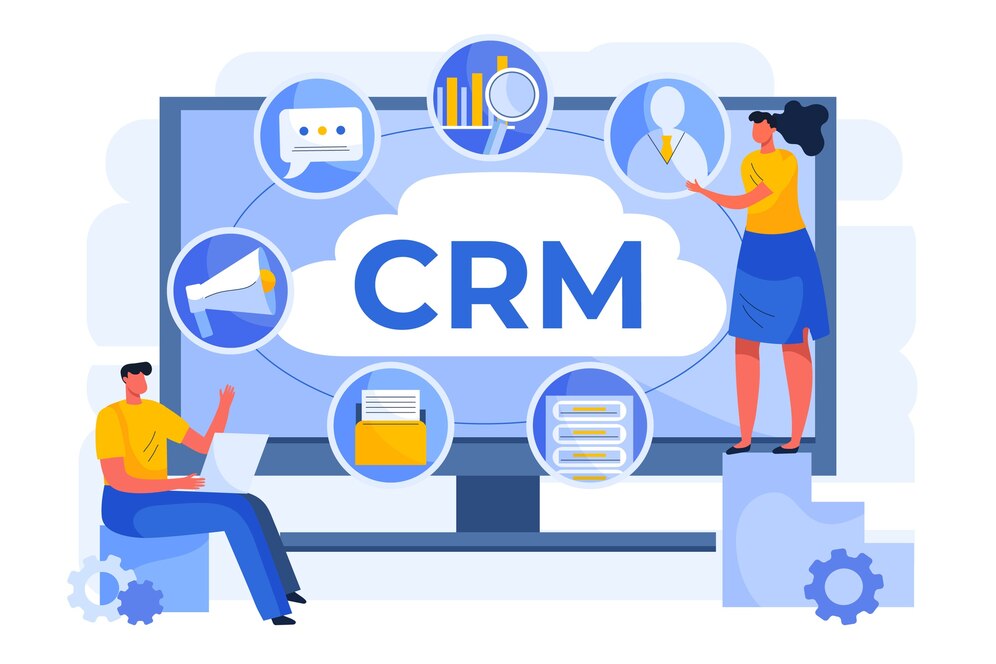Any business can undergo a big transformation by putting in place a Customer Relationship Management (CRM) system, which provides an all-encompassing perspective of client interactions, improves customer satisfaction, and increases sales efficiency. The process of going from selection to complete integration, nevertheless, can be difficult. Here, we list the essential procedures to guarantee a CRM deployment that is fruitful.
- Define Clear Objectives
Setting specific, tangible goals is essential before beginning the CRM deployment process. Recognize your goals, whether they be to enhance customer service, improve sales productivity, or have a better understanding of consumer behavior. These goals will direct your approach to implementation and aid in measuring its effectiveness.
- Choose the Right CRM Software
Choosing the right CRM software for business is very important. Consider many possibilities in light of your sector, size, and business needs. Take into account things such as costs, scalability, simplicity of interaction with your current systems, and ease of use. Work with all stakeholders, including collaborating with IT, sales, and customer support to make sure the CRM you choose satisfies a variety of needs.
- Get Leadership Support
Implementing CRM successfully requires leadership support. In addition to endorsing the project, leaders had to actively engage in it and relay its significance to the entire company. Their assistance is valuable in getting resources and creating an environment where the new system is welcomed and used.
- Build a Cross-Functional Team
Create a team that will work together with representatives from IT, finance, customer service, marketing, and sales departments. Getting these groups together will offer a huge range of viewpoints and can guarantee input on how the CRM will impact requirements for all groups. A good best practice is to assign a project manager to oversee the execution and facilitate communication among various teams.
- Plan and Prepare Thoroughly
A detailed implementation strategy is super important. Describe the objectives, schedule, due dates, and roles of the project. Examine your current procedures in detail and note any gaps that the CRM system has to fill. To guarantee a smooth transfer of current client data into the new system, develop a data migration plan.
- Implement User Training
User training is critical to your CRM implementation’s success. Provide very detailed instruction appropriate to various user groups. Provide user guides, online training, and practical training sessions. Users who receive ongoing support and regular training sessions are more likely to feel at ease and confident using the system.
- Ensure Data Quality
Any CRM’s system’s foundation is made up of precise and clean data. Perform a complete data audit to eliminate errors, out-of-date information, and duplicates prior to data migration. Maintaining the integrity of your CRM data requires the implementation of data quality standards and frequent audits.
- Customize to Fit Your Needs
Even though the majority of CRM systems provide a wealth of functionality, modification is frequently required to match the system to your particular business procedures. Adjust fields, processes, and reports to meet your needs. Avoid over-customizing the system, though, as this might make it more complex and require more upkeep.
- Integrate with Existing Systems
Make sure your CRM works effectively with other current systems, including ERP, marketing automation tools, and e-commerce platforms, to ensure a smooth information flow. Integration improves the effectiveness of your business processes and aids in the maintenance of a single source of truth.
- Monitor
The go-live date is not the end of the CRM implementation process. Keep an eye on the system’s functionality and solicit user input. To gauge how successfully the CRM is accomplishing your goals, use analytics. Be prepared to make incremental changes in response to user input and evolving business requirements.
Conclusion
A combination of strategic planning, efficient execution, and continual optimization leads to a successful CRM deployment. You can fully utilize your CRM system and foster improved client connections, enhanced productivity, and long-term business growth by adhering to these best practices. Recall that the objective is to create a culture that uses the CRM to improve each and every customer interaction, not simply to deploy one.
